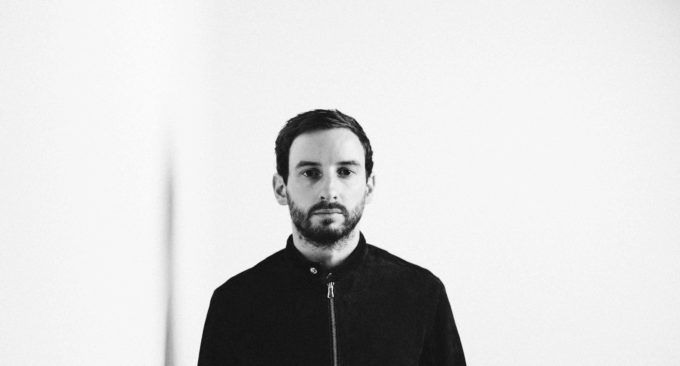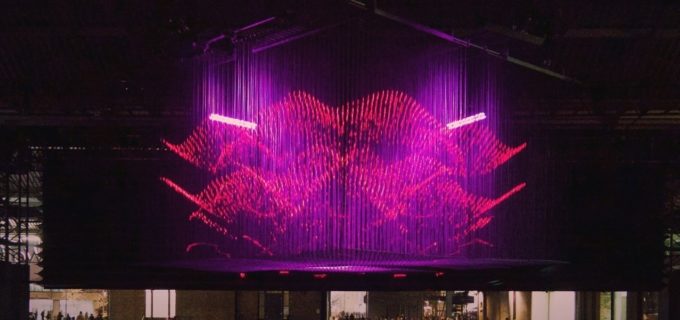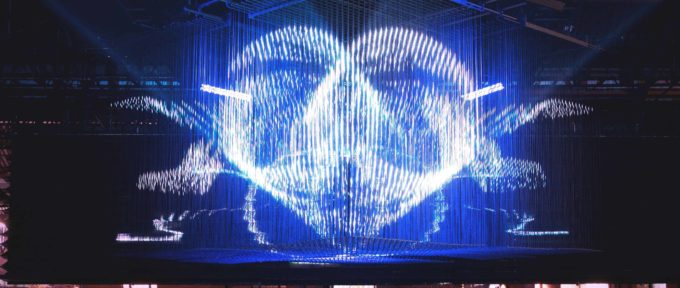


We are pleased to present a series of digital music and installation works for Brighton Digital Festival. On October 4-6 Max Cooper will be here with Aether, a collaboration with Architecture Social Club. The large scale work installation plays on our relationships to sound, colour and form. A live show takes place within the work on October 4. Max told us a little bit about the piece and what audiences can expect to experience during a visit.
What were your inspirations that allowed for the creation of the kinetic installation of Aether?
The starting point from my side was wanting to find a new visual language to communicate with, and wanting to bring the visual element of my live shows away from a screen at the edge of a room and into the audience, so they could really interact with the visual experience close up. Live music is a visceral experience with the low frequencies in particular having a strong physical effect, so I wanted some of that, something beautiful and n-dimensional which the audience can almost touch. Architecture Social Club came up with this great design and we then set about building the content and live show.
Would you describe yourself as being a more visual or a more aural person? How do you think that sound and image intertwine in Aether?
I’m more of a visual thinker, I always see my music as structural entities, they have particular form and colour. That’s why I’ve always had a strong focus on working with visual artists for each release, and now why I build visual stories and aesthetic in parallel with my writing process, so everything is as tightly integrated as possible. With Aether, we have a very specific, and very unusual visual language, well suited to the sorts of sound design experiments I enjoy, and also well suited to tightly synced rhythm and glitch, and of course, perhaps most importantly, something extremely beautiful for those moments of musical peace which are so important in what I do.
Does the performance and the installation for Aether differ? Do they have a dialogue or can they stand by themselves?
Each are stand-alone presentations. The install version is more ambient and slowly evolving, more reflective, as it’s designed for solo-viewing, being an installation. Whereas for the live version we have a group dynamic, plus the required flexibility of my interaction with the audience which can be rendered visually. In practice this means more extreme changes for more extreme moments in live context, more variation in content, more rhythm and sync sections, more of a gig feel.
Who are the electronic music artists that you listen to today?
I’m not sure if it counts as electronic strictly, but I’ve been obsessing over Bing & Ruth’s last LP recently, plus Lusine’s last has been a regular, and Helios’ new release is the most exciting thing just arrived, I’m a big long time fan of Helios.
Why come to the Attenborough Centre for the Creative Arts to present your work? What are you looking forward to about this show and installation?
It’s a beautiful space and a pleasure to be working with people who are interested in trying new and exciting things musically, visually and artistically. I’m most looking forward to how we can adapt the system to the new space, and what doors that opens up creatively. The whole project is a big experiment, so every time we do it we discover and learn new things.